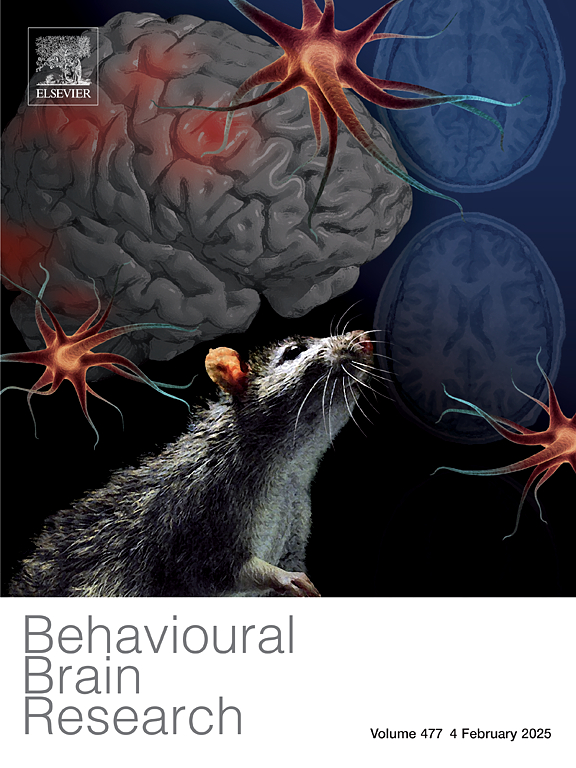模拟是大鼠空间观察学习的行为策略
IF 2.3
3区 心理学
Q2 BEHAVIORAL SCIENCES
引用次数: 0
摘要
人类和一些非人类物种已经显示出通过观察实验对象来学习的能力。这种学习的一种基本形式是空间观察学习(sOL), naïve动物在目睹演示者解决同样的任务后,提高了它们在空间任务中的准确性。随着海马CA1社会位置细胞的发现,以及CA2和腹侧CA1神经元在处理和储存社会记忆中的作用,这种能力得到了神经生理学的支持。然而,海马在完成sOL中的直接作用以及观察动物所采取的行为改变尚不完全清楚。观察学习可以用模仿、仿真或局部增强等行为过程来解释。我们使用了一个改进版本的绿洲迷宫来揭示naïve观察鼠在sOL期间展开的策略。我们的结果表明,模拟是观察者从自由觅食方式转向目标导向行为时实施的主要策略。此外,观察期间海马体的药理学失活阻碍了sOL,揭示了该结构参与这种行为改变的必要性。我们的研究结果表明,海马体对于演示者在空间中的内部表征和他们向特定区域的运动以及动物在观察学习过程中对他人行为目的的理解是必要的。本文章由计算机程序翻译,如有差异,请以英文原文为准。
Emulation as a behavioral strategy underlying spatial observational learning in rats
Humans and several non-human species have shown the ability to learn by observing an experimented conspecific. A basic form of this learning is spatial observational learning (sOL), where a naïve animal improves their accuracy in a spatial task after witnessing a demonstrator solve the same task. This ability has gained neurophysiological support with the discovery of hippocampal CA1 social place cells, which encoded the position of others, and the role of CA2 and ventral CA1 neurons in processing and storing social memory. However, the direct role of the hippocampus in accomplishing sOL and the behavioral changes adopted by the observer animal have not been fully understood. Observational learning can be explained by behavioral processes such as imitation, emulation, or local enhancement. We used a modified version of the oasis maze to unravel the strategy unfolded by naïve observer rats during sOL. Our results suggest that emulation is the primary strategy implemented by observers by switching from a free-foraging approach to goal-directed behavior. Furthermore, the pharmacological inactivation of the hippocampus during the observation period impeded sOL, revealing the necessity of this structure for engaging in this behavioral change. Our results propose that the hippocampus is necessary for the internal representation of the demonstrator in the space and their movement towards a particular area and for the animal comprehension of the behavioral purpose of others during observational learning.
求助全文
通过发布文献求助,成功后即可免费获取论文全文。
去求助
来源期刊

Behavioural Brain Research
医学-行为科学
CiteScore
5.60
自引率
0.00%
发文量
383
审稿时长
61 days
期刊介绍:
Behavioural Brain Research is an international, interdisciplinary journal dedicated to the publication of articles in the field of behavioural neuroscience, broadly defined. Contributions from the entire range of disciplines that comprise the neurosciences, behavioural sciences or cognitive sciences are appropriate, as long as the goal is to delineate the neural mechanisms underlying behaviour. Thus, studies may range from neurophysiological, neuroanatomical, neurochemical or neuropharmacological analysis of brain-behaviour relations, including the use of molecular genetic or behavioural genetic approaches, to studies that involve the use of brain imaging techniques, to neuroethological studies. Reports of original research, of major methodological advances, or of novel conceptual approaches are all encouraged. The journal will also consider critical reviews on selected topics.
 求助内容:
求助内容: 应助结果提醒方式:
应助结果提醒方式:


